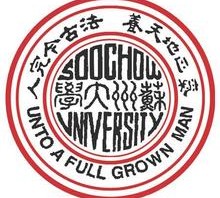I. Phrase Translation
食品安全:food safety ; food security
插花(艺术):Flower Arrangement
知识产权保护 :Intellectual Property Protection
主权债务危机:sovereign debt crisis
草根文化: grass-rooted culture
贸易顺差: trade surplus
“抑郁”的一代
人民币升值:appreciation of the RMB
中国红十字会:Red Cross Society of China
国家新闻出版总署:General Administration of Press and Publication;
打击盗版活动:fight piracy;crackdown on piracy
网络上瘾:Internet Addiction
滥用职权:abuse one’s power and position
裸官:Naked official
产业升级: industrial upgrading
Central Ballet Troupe: 中央芭蕾舞团
blue and white porcelain:青花瓷
FIFA:国际足球联盟(Federation Internationale de Football Association)
ASEAN:东南亚国家联盟(东盟)(Association of Southeast Asian Nations)
currency manipulator:货币操纵国
buggee jumping:蹦极跳
surrealism:超现实主义
sample survey:抽样调查
illegal pyramid selling:非法传销
multi-polar world:多极化世界
myth of China’s peaceful rise:中国和平崛起的神话
anti-dumping investigation:反倾销调查
costume drama:古装剧
core competiveness:核心竞争力
intellectual property infringement:侵犯知识产权
II. Passage translation
Section A English to Chinese
If completely bilingual persons have a clear understanding of a text to be translated from a source to a receptor (or target) language, they do not need to instruct their brains about how to use a noun, verb, adjective, or participle to represent a particular concept or to place a qualifying clause at the beginning or the end of a sentence. All such decisions are largely automatic because our brains are excellently organized to carry out all such decisions in a largely unconscious manner. The process of going from conceptual clarity to a verbal text is almost automatic and should be regarded as essentially no different from writing in one’s own mother tongue. Clarity in understanding the source text is the key to successful translating into a receptor language. Translators do not translate languages but texts.
When, however, a text written in one’s own mother tongue must be translated into a foreign language, the focus of attention shifts radically. The translator of such a text should have no difficulty understanding the text, unless it is badly written, but almost inevitably the focus of attention shifts to the linguistic features of the translation, including the proper arrangement of words, sensitivity to the style, and the relevance of the translation for receptorsA
Some source-language texts inevitably leave their mark on a translation. This is particularly true of legal texts in which there is a tradition of including within a sentence far more than is done in ordinary speech so as to have all the conditioning factors concisely combined.
Section B Chinese to English
当我们谈论美的时候,会想到许多美的现象:如日出日落的壮丽景象、男女之间生死般的爱情、李白的诗篇、贝多芬的音乐和梵高的绘画等。对于这些现象,我们都用美字来命名,并将它们都归属于美的领域。但当我们进行深入思考的时候,就会发现它们似乎并不具备任何同一性。有些美的现象之间缺少直接的关联,如一个人的美与自然界的动植物的美;有些美的现象之间虽然有一些关联,但它们之间存在巨大的差异,如音乐的美和绘画的美;更有甚者,有的美的现象是对立的,如崇高和优美等。
美的现象领域为什么会如此地丰富多样呢?这是因为美本身就缺少严格明确的规定?还是因为美字本身的乱用和误用?但有一点是肯定的,当我们说不同现象的美时,那个美字本身就具有不同的意义。由此我们可以说,虽然美的现象的复杂性有多种原因,但其中一个重要的原因在于美的字义的复杂性。因此我们有必要对于美作语义分析。 (摘自彭富春的《哲学美学导论》翻译硕士真题网注)
苏州大学MTI 真题下载(含英语翻译基础、翻译硕士英语和汉语写作与百科知识三门):百度云
真题来自互联网 短语翻译答案由mtizt.com提供

你好
核心竞争力 competitiveness
还有百度云分享吗?求 ,非常感谢